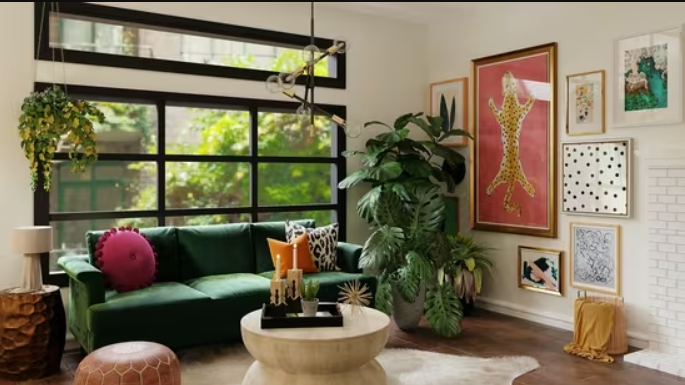
The influence of color psychology in interior design extends far beyond visual aesthetics, deeply influencing the mood, atmosphere and functionality of spaces. With changes in urban migration patterns, smaller urban centers and rural areas saw an increase in development, prompting architects to reconcile practicality with visual appeal.
In an interview with HT Lifestyle, Alpana Gupta, Partner, Vijay Gupta Architects, shared, “Within this development, the strategic application of color emerged as a key element. Communal spaces adopted earthy colors that foster connection, while educational areas came out in neutral colors emphasizing their educational purpose. Meanwhile, vibrant colors decorated the building’s exterior, creating a playful charm and inviting ambiance. This intentional use of color extends beyond the surface, creating spaces that not only connect on an emotional level but also respond intelligently to environmental factors. Ultimately, it exemplifies the blend of functionality and aesthetics, creating an attractive and purposeful environment that meets both visual appeal and practical needs.
“In the world of interior design, colors have an incredible impact, shaping not only the visual appeal but also the emotional nature of a space,” reveals Monica Chaudhary, managing director and growth strategist at Habitat Architects. Light colors make the room appear more spacious and create a happy mood, while dark colors create an intimate atmosphere. In a carefully crafted color palette, each color is important in enhancing the mood and ambiance. Blending high-end design with timeless colors can transform a home into a sanctuary that promotes well-being. For example, cool blue invites calmness, while vibrant red radiates energy. The artistic blend of these colors creates spaces that resonate with peace and positivity. In our pursuit of elegant interiors, understanding color psychology is paramount. It’s not just about creating a visually stunning space; It’s about crafting an environment that nurtures, relaxes and energizes, ensuring that each space is a haven for the soul.
Sarabjit Singh, Founder and Architectural Designer, Villa Ortiga explains, “Color psychology is an important aspect of interior design as it can influence the mood and atmosphere of a space. Choosing colors is not just about aesthetics, but it also affects human emotions and perceptions. Each color conveys a unique message, which can influence our emotions and interactions with our environment. Warm tones like red, orange and yellow create a feeling of warmth and energy. These colors encourage conversation and thus are ideal for social spaces like living rooms and dining areas. On the other hand, cool colors like blue and green create a calming atmosphere, making them suitable for bedrooms and relaxation spaces.
He elaborates, “Neutral colors like white, gray and beige provide a versatile canvas that unifies different design elements. They give a timeless and sophisticated feel to interiors while promoting a feeling of peace and clarity. Earthy colors like brown and terracotta connect with nature, setting a base and nurturing environment. Bold and vibrant colors add personality and dynamism to a space. A red accent wall or burst of vibrant artwork can add drama and excitement while energizing the atmosphere. However, moderation is important to avoid overpowering the senses. Understanding the psychological impact of colors helps designers create environments tailored to the desired emotional experience. It is a delicate interplay between personal preference, cultural influences and the intended functionality of the space. Thoughtful application of color psychology transforms interiors into emotionally resonant and harmonious sanctuaries.